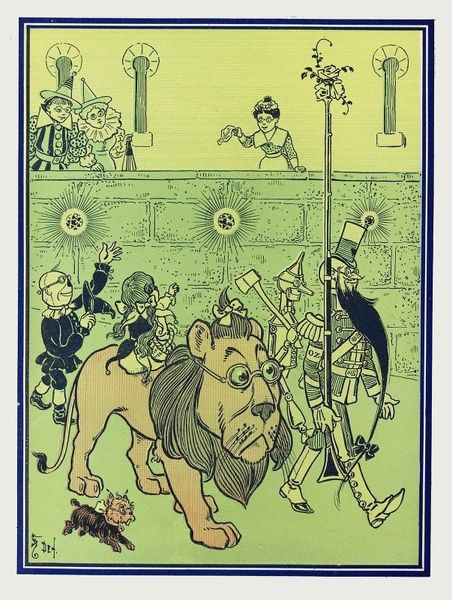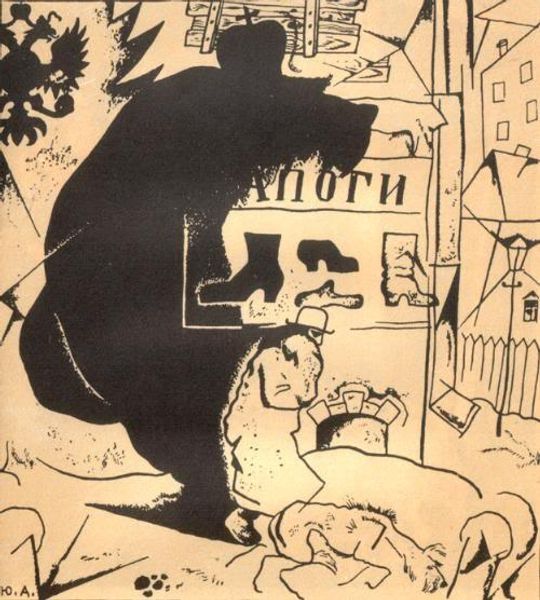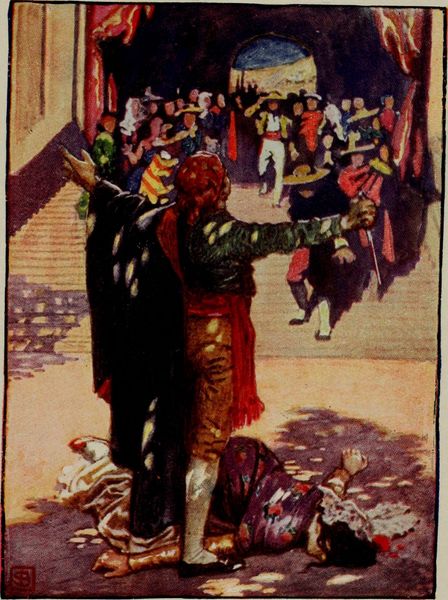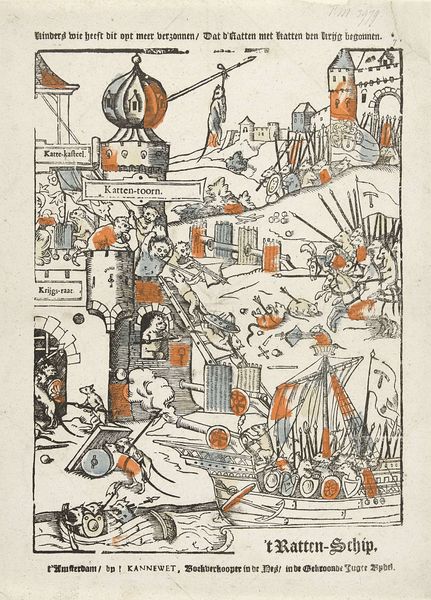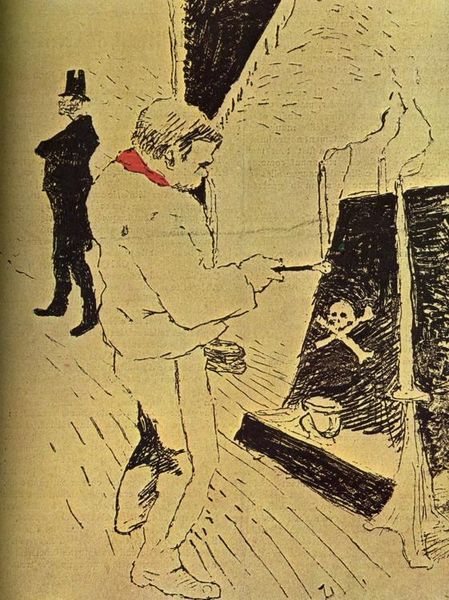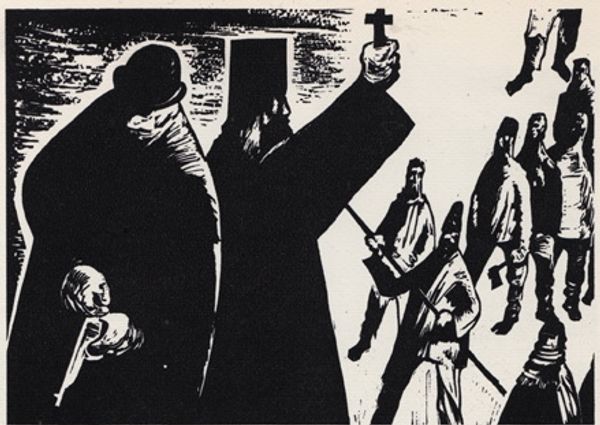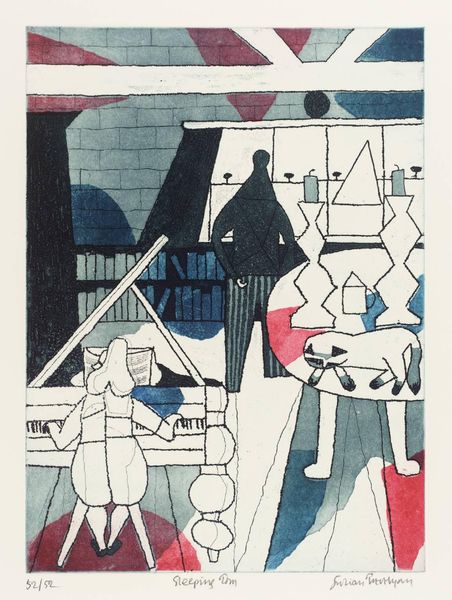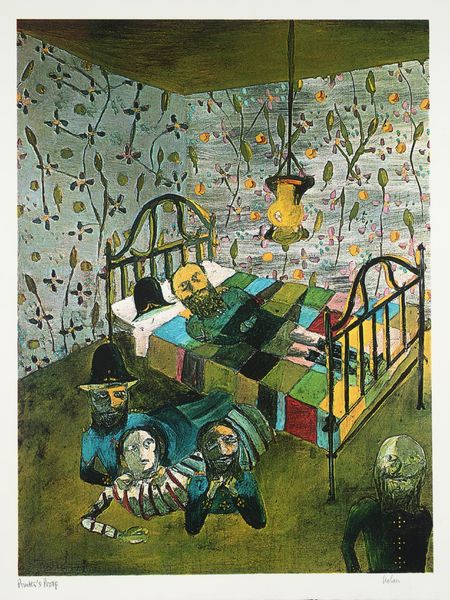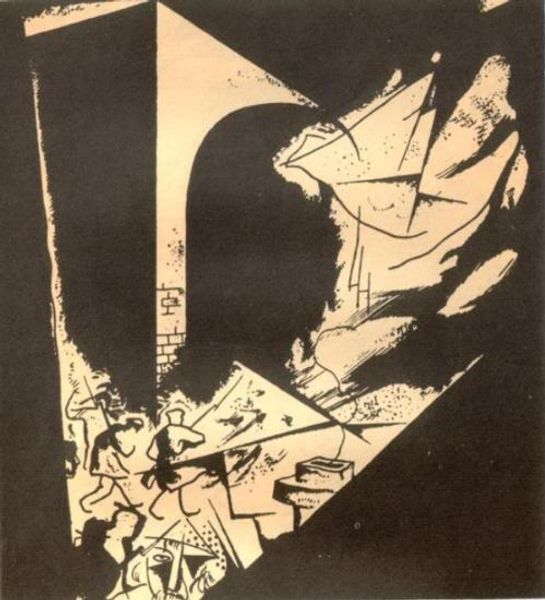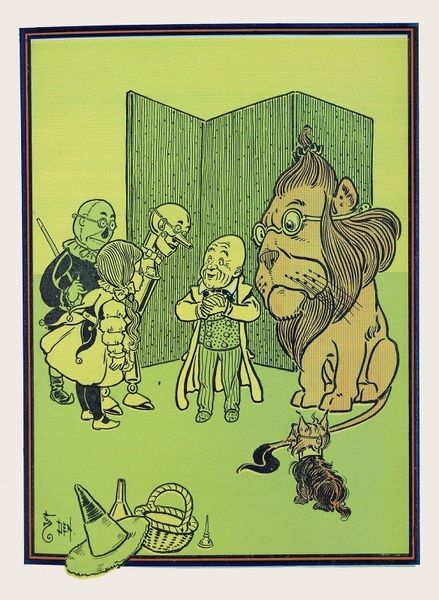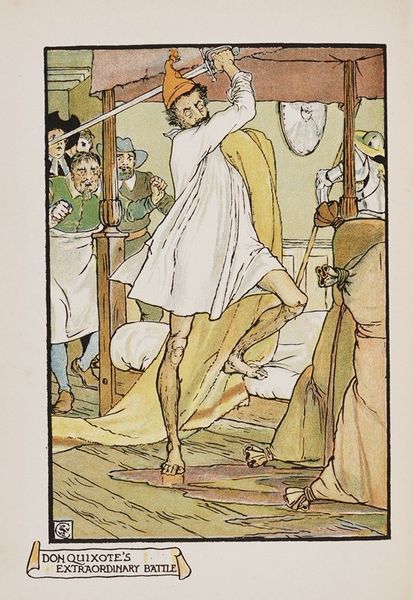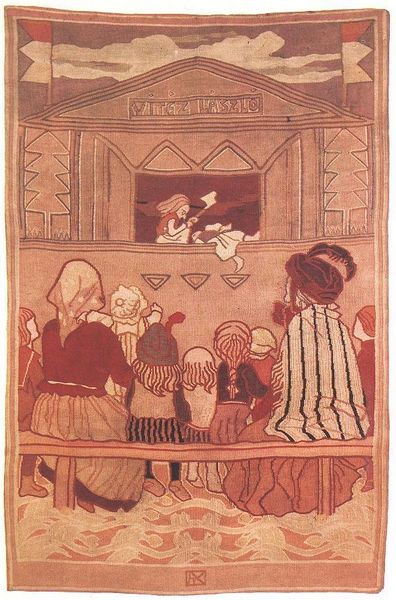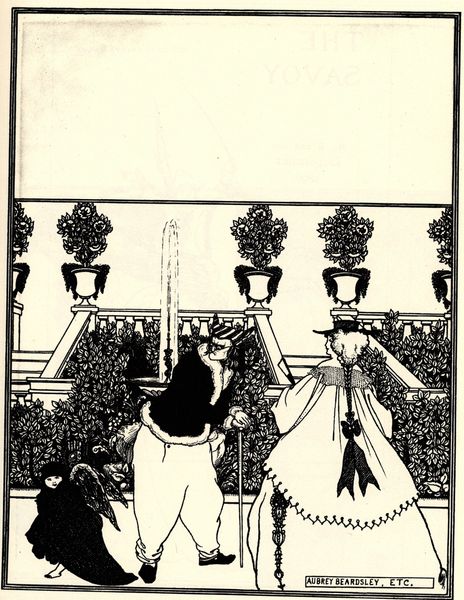
#
comic strip sketch
#
quirky illustration
#
animal
#
furniture
#
cartoon sketch
#
personal sketchbook
#
sketchwork
#
illustrative and welcoming imagery
#
sketchbook drawing
#
storyboard and sketchbook work
#
cartoon carciture
#
sketchbook art
Copyright: Public domain
Curator: This charming image is "Illustration for the book 'How mice buried the cat' by Zhukovsky," created around 1910 by Heorhiy Narbut. It's a sketch, seemingly in ink and watercolor, meant for a children's book. What's your initial take? Editor: Mischievous! And slightly unsettling. The skewed perspective and the looming cat-shaped shadow cast an eerie pall over what appears to be a mouse celebration of sorts. There's a delicious tension here between the lighthearted scene and the implied threat. Curator: Absolutely. Narbut masterfully employs symbolic inversion here. We see the natural order disrupted – mice, typically prey, are now in control, almost militarized with their tiny weapons. The upside-down cat signifies powerlessness, a complete reversal of expectations. Editor: Which begs the question, who wrote the story? And what socio-political message, intended or otherwise, might have been coded into this particular narrative back then? Are these mice symbols of an oppressed class rising up, perhaps, or is it simply a children’s tale? Curator: Context is vital. This was created in a period of considerable upheaval. Narbut's Ukrainian heritage certainly colors my interpretation. It reflects a deep seated historical tension present within Ukrainian society that’s symbolized within animals who, at one time, represent dominance and subjugation of power. The cat might also symbolize Tsarist Russia, viewed as the oppressor. Editor: I hadn't considered that specifically. It makes this whimsical scene much darker. Considering Russia’s oppression of the region, that is a distinct possibilty. Curator: The illustration further underlines this cultural conflict in the satirical manner, as it blends elements of traditional folk art with modern graphic design. It reveals a moment of triumph, but also underscores how power dynamics can dramatically change. Editor: It is truly impressive. Narbut turns what appears to be a quaint sketch into something that deeply considers hierarchies. And in some ways, reminds us of how some cultural narratives and biases never leave. Curator: A simple children’s illustration on its surface, a reminder that symbols often hide a complex truth.
Comments
No comments
Be the first to comment and join the conversation on the ultimate creative platform.
